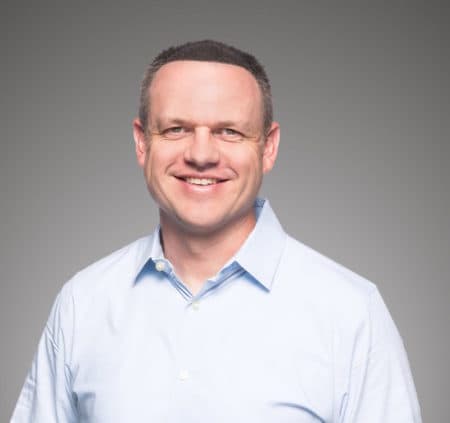There has been a digital revolution going on in higher education for several years now. And it’s about to get even more disruptive. Today’s high-technology fields are changing so quickly that the traditional university educational models, even if they are simply brought online, can’t truly keep pace. The crisis for qualified data scientists is just one of the more salient examples.
Making matters more complex, industries such as manufacturing and AEC (architecture, engineering, and construction) are facing dramatic technological change at an accelerating rate. Big data, machine learning, and artificial intelligence (AI) will confront both of these industrial domains—upending traditional tools and workflows.
With this change comes a big demand for new skill sets, driving both employees and those in college to get prepared for the world whose only constant is change.
Pluralsight and the Online Learning Revolution
Pluralsight is a global leader in the revolutionary change happening in education and online learning. The company’s ‘about’ webpage headlines: “Redefining the way the world learns.”
MORE: Five Emerging Trends and Their Potential Impact on the Future of the AEC Industry
Indeed sites like theirs are creating disruptive educational models that more capably meet the changing dynamics of learners at various stages of their careers, including before college graduation.

01- Architosh recently had a chance to talk to Andy Rahden, VP of Pluralsight, about their new AEC and manufacturing software learning paths and initiatives.
Recently, I had the pleasure to chat with Andy Rahden, Vice President of Creative, Design, and Engineering at Pluralsight, to talk about their emerging new focus in serving the AEC and manufacturing markets.
The Interview
How did the push into AEC and MCAD industries come about? Was it due to the acquisition of Digital-Tutors?
Aaron Skonnard, Pluralsight’s co-founder and CEO, and I started to talk about the importance of technology-driven design and how things were changing everything—from a very engineering perspective all the way to a very artistic perspective. He decided that Pluralsight would buy Digital-Tutors and make a footprint in the creative design and engineering space.
It was a great acquisition for us that helped meet the learning needs of artists in the film and game development industries. We saw an opportunity to leverage our strengths there to expand our course collection to meet the learning needs of the AEC and manufacturing markets, and that’s what we did.
Now, our platform not only provides online courses, but it also provides these professionals with assessments, learning paths, and mentoring to help them stay on top of in-demand skills.
Learning is changing due to technologies and individuals and companies must stay relevant, what types of learners are you going to be focused on?
You’re completely right. The success of people and teams is highly dependent on their ability to keep their skills current. That’s no secret, and individuals and companies are feeling the pressure to be best-in-class in their skills and capacities as they strive for innovation in their markets.
Because tech is changing faster than ever before, technologies in the AEC and manufacturing industries need real-time access to learning the newest technologies in their trade and to achieving ‘expert status’ proficiency.
Regarding learners? We are very focused on helping professionals find their competitive edge by delivering a unified experience that accommodates a variety of learning options and learning styles. On Pluralsight pros can learn by watching, learn by doing, and when they get stuck, they can get unstuck with the help of live mentors.
How do you plan to keep them learning more, keep them engaged?
This is really a great question. We really believe that in order to provide our learners with the most powerful, relevant, and timely learning experiences, our platform has to be very engaging. We do that by updating our platform with new content every day. We’re adding new courses, assessments, learning paths, and mentors to the ecosystem on a regular basis, so there’s always something new and exciting to learn.

02 – AEC technologies are dramatically changing and firms need training on leading solutions. Pluralsight partnered with Autodesk to bring learning paths to tools like Autodesk Revit, for example. Image: Pluralsight. All rights reserved.
We have found really high engagement in our learning paths. What we have done is invest in a variety of different learning paths. Six months ago we had training content in video format, and we wanted to organize that training content into categories, focused either on “tools” or on “persona.”
Such as…
Tools like Revit or AutoCAD. The personas would be things like an architect, a structural designer. And so we want to be able to continue building learning paths as we move forward for both of these types of scenarios. Whether people are looking for training on specific tools or they want to receive training because they are an architect and they want to be a more skilled architect or more inspired architect, we are providing this.
Can you talk about your algorithm-based assessment technology that makes learning at Pluralsight intelligently driven? This is your assessment program, correct?
Yes. We bought Smarterer, for $75 million dollars, a couple of years ago, and we integrated their technology into our platform to drive the way we help our learners assess their skill set. For example, if you wanted to learn Revit the first thing we would want to know is how much about Revit do you really understand, but we don’t want to ask you 500 questions in a certification exam. That’s not the appropriate step because it takes too long. So we want to ask you about 15 questions, for example.
next page: More on Smarterer technology and AEC/MCAD Industry Certifications training




Reader Comments
Comments for this story are closed